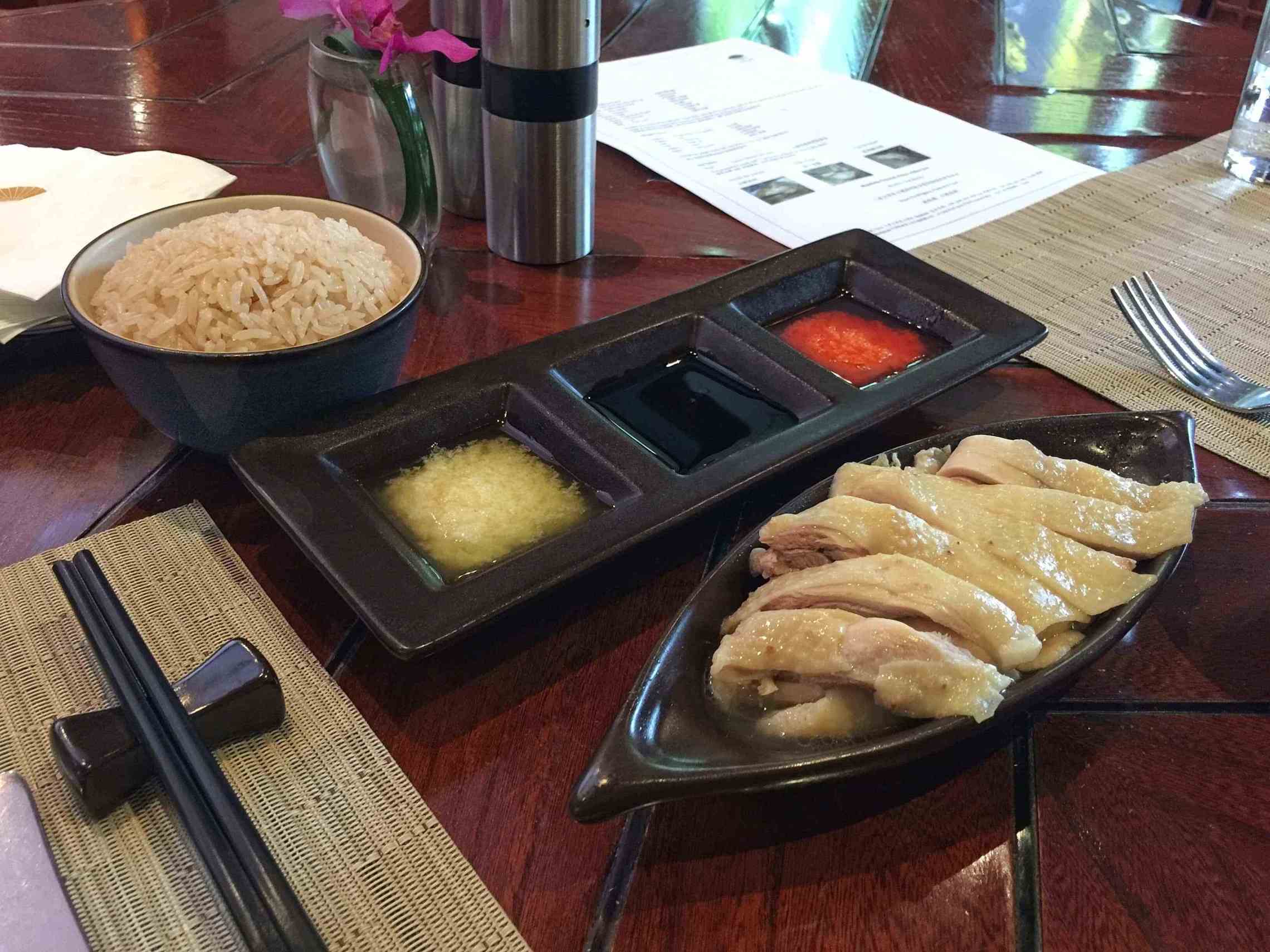
The History of Asia’s Favorite Chicken Rice.
Chicken rice is one of Asia’s staple comfort dishes. Its roots evolved from China and popularized as its immigrants settled around Asia. Learn the Hainanese chicken rice history and how it actually differs from the chicken rice of Hainan:
Hainanese Chicken Rice History
Hainanese Chicken Rice is not from Hainan, China. It is actually a recipe conceived in Singapore (hence, it’s the national dish) with influences from Hainan (hence, the name).
The dish was invented by Hainanese chefs who immigrated to Singapore in the late 19th century. They used the Hainan’s Wenchang chicken recipe with local Singaporean and Cantonese adaptations to create Singapore’s own version of chicken rice. Then later in the 1940s, the first Hainanese chicken rice stall opened.
Hainan’s Wenchang Chicken
Hainan’s Wenchang chicken is the island’s local fowl that are free-range and feed on the fallen coconuts. These birds are known for its bony and fibrous state. This version of chicken rice uses older chickens as cooks believe it has more flavor.
Aside from the chicken itself, the island’s recipe also calls for using both pork and chicken bones in its stock.
Singapore’s Hainanese Chicken Rice
Singapore’s Hainanese chicken rice uses younger birds as they are more plump and tender.
Apart from the difference in the age of the chicken, the Hainanese cooks also incorporated Cantonese cooking techniques to get the chicken even more juicy and tender. These techniques involved poached the chicken in chicken stock and then dipping it into ice water for tenderness and to achieve that jelly-like skin.
From Hainan to the World
If you travel around Asia, you will notice that many Asian countries have their own version of chicken rice. Hong Kong has its White Chicken (which is the Cantonese version that influenced the origins of Singapore’s Hainanese chicken rice). Malaysia has Nasi Ayam, Thailand has Khao Man Gai, and Vietnam has Com Ga Hai Nam.
The commonality in all these chicken rice origins is that they were originally developed by Chinese immigrants who wanted to create their homeland’s chicken rice using what was locally available in their new home countries.
Read more about Hainanese Chicken Rice
An Easy Hainanese Chicken Rice Recipe to Cook at Home
Mandarin Oriental, Sanya: Cooking Classes
Singapore Eats: From Hawker Stalls to Celebrity Chefs
Read more about Ramen:
Chicken History: Centuries-Old & Internationally Loved
Chicken Soup Around the World for a Feel-Good Meal
Easy, Tender, Juicy Roast Chicken Recipe
An Easy Hainanese Chicken Rice Recipe to Cook at Home
Disclaimer: This article contains affiliate links. With no additional cost to you, your purchases earn me a commission if you click on the links via my website – Thank you!
Sign up for my newsletter on the sidebar for blog updates and my travel insider tips! And, check out my vlogs on YouTube!


